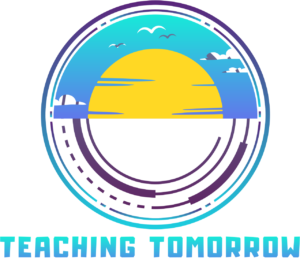
Welcome to “Forecasting Tomorrow: A Comprehensive Guide to Future Trends.” In a rapidly evolving world, the ability to anticipate and adapt to future trends is essential for businesses, individuals, and society as a whole. This blog aims to provide you with valuable insights and techniques to become a proficient trend forecaster. Let’s dive in!
I. Understanding the Art of Forecasting
A. The Science behind Predictions: Forecasting future trends is a multidisciplinary endeavor that combines data analysis, historical patterns, expert opinions, and innovative thinking. By examining past trends and current indicators, we can make educated predictions about what lies ahead.
B. Key Factors Influencing Future Trends: Various factors shape future trends, including technological advancements, social and cultural changes, economic conditions, and environmental factors. Understanding these influences helps us identify emerging patterns and predict their potential impact.
C. Historical Examples of Successful Forecasts: Looking back, there have been numerous instances where accurate trend forecasting has transformed industries and societies. Consider the rise of smartphones, the surge in e-commerce, or the adoption of renewable energy sources. By studying these successes, we can learn valuable lessons for our own forecasting endeavors.
II. Tools and Techniques for Forecasting Future Trends
A. Data Analysis and Research: Robust data analysis and research form the foundation of effective trend forecasting. By collecting and analyzing relevant data sets, we can identify patterns, correlations, and outliers that provide valuable insights into future trends.
B. Utilizing Big Data and AI in Forecasting: The advent of big data and artificial intelligence has revolutionized trend forecasting. These technologies enable us to process vast amounts of information, recognize patterns, and make data-driven predictions with unprecedented accuracy.
C. Scenario Planning and Trend Mapping: Scenario planning involves creating multiple hypothetical future scenarios and evaluating their likelihood and potential impact. Trend mapping, on the other hand, visualizes the interconnections between various trends, helping us identify dependencies and anticipate their evolution.
III. Identifying Promising Industries and Sectors
A. Analyzing Emerging Markets: By keeping a close eye on emerging markets, we can identify industries and sectors that show significant growth potential. Researching demographics, consumer behavior, and technological advancements in these markets allows us to forecast future trends accurately.
B. Spotting Disruptive Technologies: Disruptive technologies often reshape entire industries. By monitoring technological advancements and identifying breakthrough innovations, we can forecast the potential disruption and prepare for the resulting opportunities and challenges.
C. Evaluating Economic and Societal Shifts: Understanding economic and societal shifts is crucial for trend forecasting. By examining macroeconomic indicators, social movements, and cultural shifts, we can anticipate changes in consumer preferences, business models, and market dynamics.
IV. Top Trends to Watch Out for in Various Fields
A. Technology and Innovation
AI and Machine Learning Advancements: Artificial intelligence and machine learning continue to advance rapidly, with applications in various industries such as healthcare, finance, and transportation. Predictive algorithms, automation, and intelligent decision-making systems are poised to reshape these sectors.
IoT and Smart Devices Revolution: The Internet of Things (IoT) and smart devices are transforming the way we interact with technology. Connected homes, wearable devices, and smart cities offer a glimpse into a future where everything is seamlessly interconnected.
Blockchain’s Impact on Industries: Blockchain technology goes beyond cryptocurrencies. Its decentralized and secure nature has the potential to revolutionize industries such as finance, supply chain management, healthcare, and more.
B. Business and Marketing
E-commerce Trends and Consumer Behavior: The continued growth of e-commerce is reshaping consumer behavior and challenging traditional brick-and-mortar retailers. Understanding emerging e-commerce trends, such as social commerce, personalized recommendations, and frictionless checkout, can give businesses a competitive edge.
Personalization and Customer Experience: Customers today seek personalized experiences. From tailored marketing campaigns to customized product offerings, businesses that prioritize personalization and exceptional customer experience are likely to thrive in the future.
Sustainability and Green Initiatives: As environmental concerns grow, sustainable practices and eco-friendly initiatives are becoming increasingly important. Businesses that prioritize sustainability will not only appeal to conscious consumers but also contribute to a greener future.
C. Health and Wellness
Digital Health and Telemedicine: Advancements in digital health technology are revolutionizing healthcare delivery. Telemedicine, wearable health monitors, and AI-driven diagnostics are transforming how we access and receive medical care.
Holistic Wellness and Mindfulness: There is a growing focus on holistic wellness and mindfulness, with individuals seeking mental, emotional, and spiritual well-being. Trends like meditation apps, wellness retreats, and personalized self-care practices are gaining popularity.
Biotechnology and Medical Breakthroughs: Breakthroughs in biotechnology, such as gene editing and regenerative medicine, have the potential to revolutionize healthcare and extend human lifespan. Monitoring developments in these fields can provide insights into the future of medicine.
D. Environment and Sustainability
Renewable Energy Innovations: Renewable energy sources like solar and wind power are rapidly gaining prominence as we strive to reduce our carbon footprint. Advancements in energy storage and grid technologies are making clean energy more accessible and cost-effective.
Circular Economy and Eco-friendly Practices: The shift towards a circular economy aims to minimize waste and promote sustainable resource usage. Embracing eco-friendly practices like recycling, upcycling, and sustainable sourcing will become essential for businesses in the future.
Climate Change Mitigation Efforts: As the impacts of climate change become more apparent, the need for climate change mitigation measures intensifies. Trends such as carbon capture and sequestration, sustainable transportation, and nature-based solutions will shape the future of our planet.
V. Challenges and Pitfalls in Forecasting Future Trends
A. Overcoming Bias and Assumptions: Forecasting future trends requires us to challenge our biases and assumptions. By adopting an objective and open-minded approach, we can avoid tunnel vision and ensure more accurate predictions.
B. Dealing with Uncertainties and Black Swan Events: The future is inherently uncertain, and unforeseen events, often referred to as black swan events, can disrupt even the most well-calibrated forecasts. Recognizing and preparing for uncertainties is essential in mitigating risks and adapting to changing circumstances.
C. The Ethics of Predicting the Future: Predictive technologies raise ethical considerations, such as privacy concerns and potential misuse of data. As we delve deeper into the realm of forecasting, it is crucial to address these ethical implications and ensure responsible and transparent practices.
VI. Strategies for Applying Future Trends Insights
A. Incorporating Trends into Business Strategies: Businesses that embrace future trends gain a competitive advantage. By integrating trend insights into strategic planning, product development, and marketing initiatives, companies can stay ahead of the curve and meet evolving consumer demands.
B. Adapting to Disruptions and Changes: Change is inevitable, and organizations must be prepared to adapt. By monitoring and anticipating future trends, businesses can proactively respond to disruptions, pivot their strategies, and seize new opportunities.
C. Leveraging Trends for Personal Growth and Career Development: Individuals can leverage future trends to enhance their professional growth and career development. By identifying emerging skills and industries, investing in relevant education, and embracing lifelong learning, individuals can stay agile and remain in-demand.
VII. The Future of Forecasting
A. Advancements in Predictive Analytics: As technology continues to advance, predictive analytics tools and algorithms will become more sophisticated. Improved data collection methods, enhanced algorithms, and real-time data processing will drive more accurate forecasts.
B. Impact of AI on Forecasting: Artificial intelligence will play a central role in future trend forecasting. AI-powered systems will sift through vast amounts of data, recognize complex patterns, and generate highly accurate predictions, revolutionizing how we approach forecasting.
C. The Role of Human Expertise in Prediction: While AI holds immense potential, human expertise remains invaluable in interpreting and contextualizing trends. The integration of AI and human intelligence will lead to more nuanced and reliable forecasts.
Takeaway
In conclusion, “Forecasting Tomorrow: A Comprehensive Guide to Future Trends” has provided you with valuable insights into the art of trend forecasting. By understanding the science behind predictions, utilizing the right tools and techniques, and identifying promising industries and sectors, you can become a proficient trend forecaster. Remember to stay open-minded, adapt to uncertainties, and embrace change as you navigate the path of forecasting tomorrow. Whether you are a business leader, a budding entrepreneur, or an individual seeking personal growth, harnessing the power of future trends will undoubtedly lead to a brighter and more successful future. So, go ahead and embrace the future with confidence, armed with the knowledge to navigate tomorrow’s trends.





